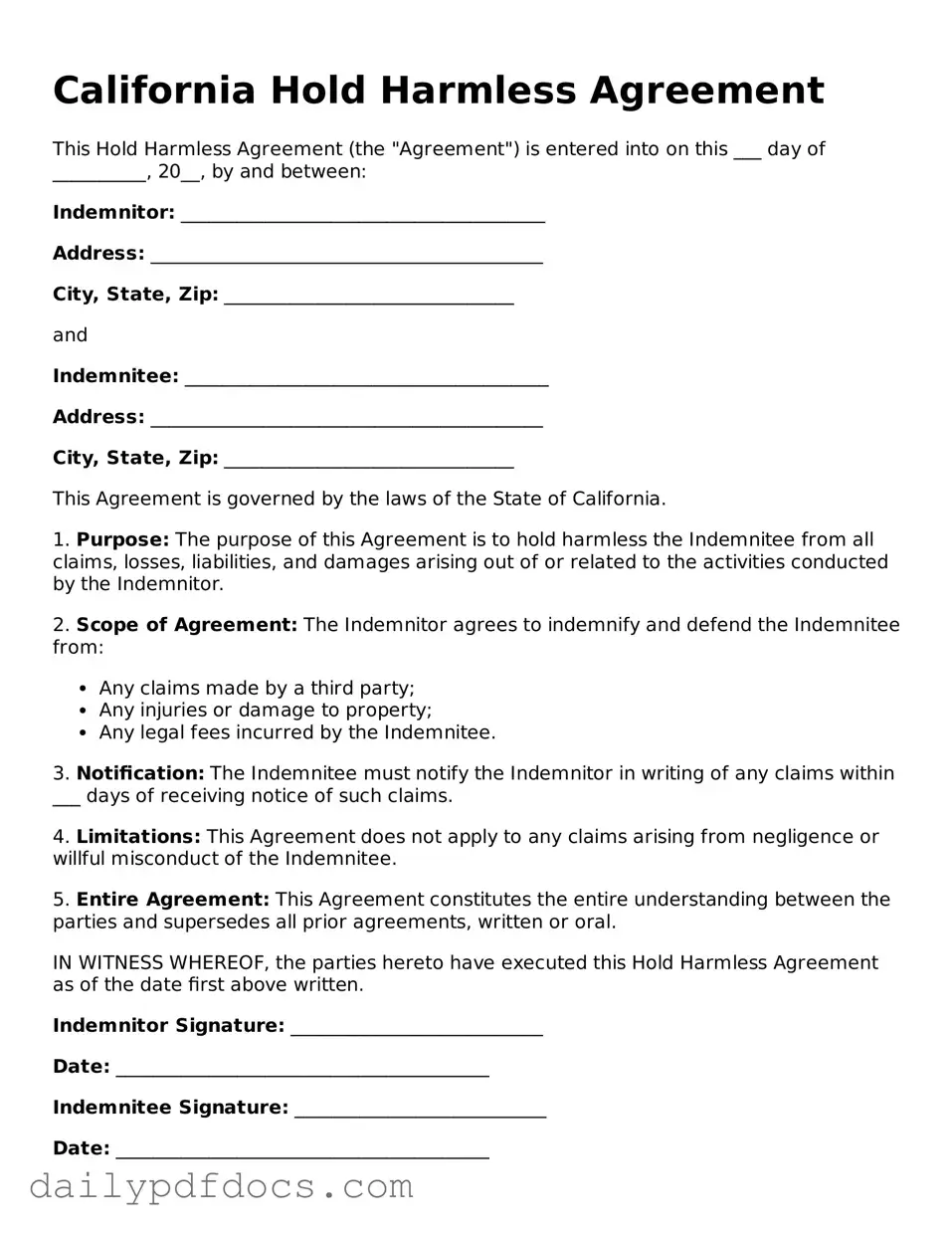California Hold Harmless Agreement
This Hold Harmless Agreement (the "Agreement") is entered into on this ___ day of __________, 20__, by and between:
Indemnitor: _______________________________________
Address: __________________________________________
City, State, Zip: _______________________________
and
Indemnitee: _______________________________________
Address: __________________________________________
City, State, Zip: _______________________________
This Agreement is governed by the laws of the State of California.
1. Purpose: The purpose of this Agreement is to hold harmless the Indemnitee from all claims, losses, liabilities, and damages arising out of or related to the activities conducted by the Indemnitor.
2. Scope of Agreement: The Indemnitor agrees to indemnify and defend the Indemnitee from:
- Any claims made by a third party;
- Any injuries or damage to property;
- Any legal fees incurred by the Indemnitee.
3. Notification: The Indemnitee must notify the Indemnitor in writing of any claims within ___ days of receiving notice of such claims.
4. Limitations: This Agreement does not apply to any claims arising from negligence or willful misconduct of the Indemnitee.
5. Entire Agreement: This Agreement constitutes the entire understanding between the parties and supersedes all prior agreements, written or oral.
IN WITNESS WHEREOF, the parties hereto have executed this Hold Harmless Agreement as of the date first above written.
Indemnitor Signature: ___________________________
Date: ________________________________________
Indemnitee Signature: ___________________________
Date: ________________________________________
